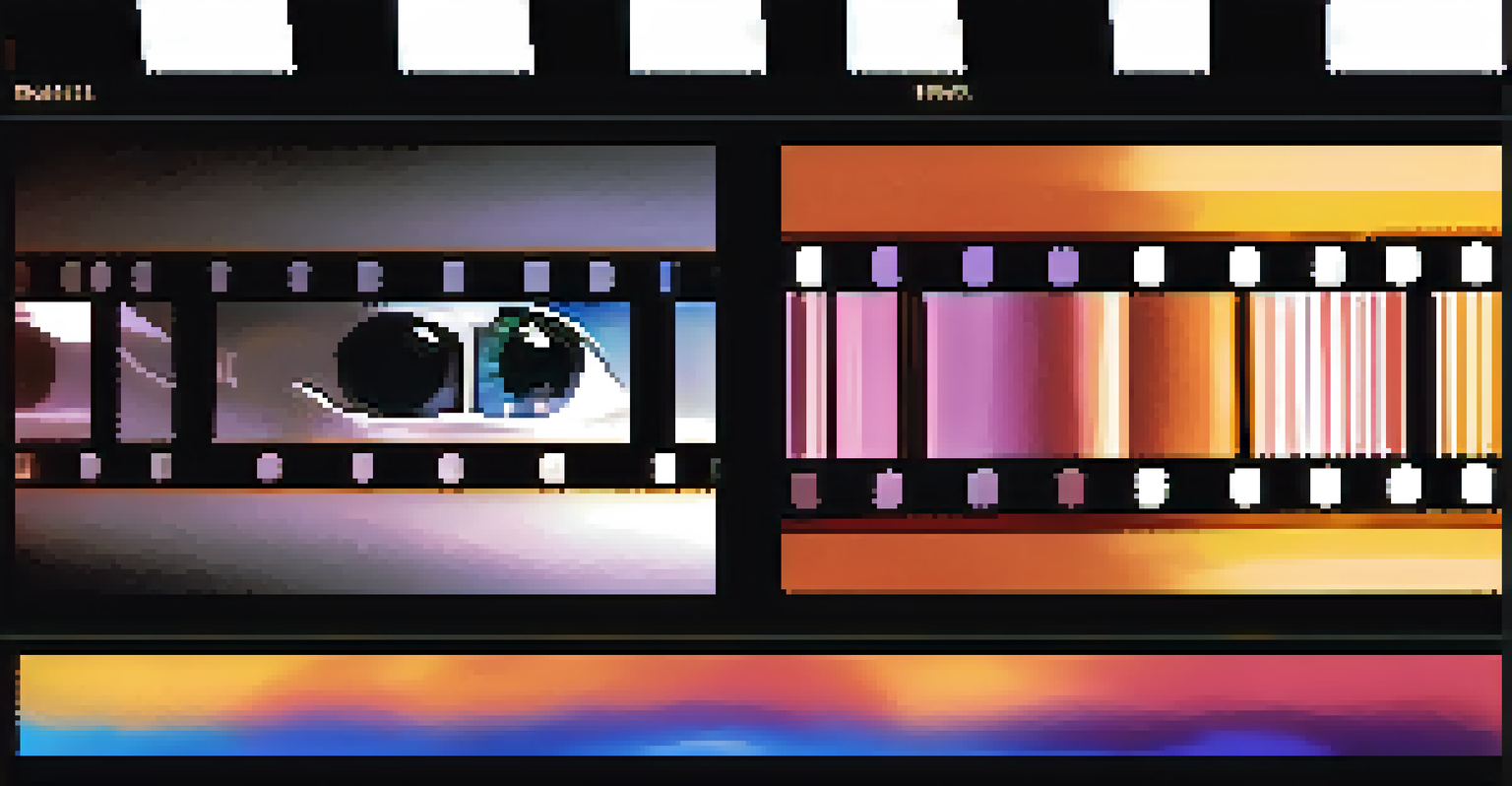Techniques Used in Film Restoration: A Behind-the-Scenes Look

Understanding Film Restoration and Its Importance
Film restoration is the meticulous process of preserving and reviving old films. Just like a painter carefully restores a faded masterpiece, film restoration aims to bring back the original beauty of a movie. This is crucial not only for historical preservation but also for future generations to enjoy cinematic art in its intended form.
Film is a powerful medium that can transcend time and space, connecting generations through shared stories and emotions.
Over time, films can deteriorate due to physical wear, environmental factors, or simply the passage of time. Restoration ensures that these cultural artifacts remain accessible, allowing audiences to connect with the stories, emotions, and artistry of the past. Imagine watching a classic film that has lost its color and clarity; restoration helps it shine once more.
Moreover, as technology evolves, the techniques for film restoration have also advanced. From digital enhancements to traditional methods, each technique plays a vital role in ensuring that films are not only preserved but also revitalized for contemporary viewers.
Digitization: The First Step in Modern Restoration
The journey of restoring a film often begins with digitization, where physical reels are converted into digital files. This process is akin to scanning a cherished family photo to preserve it for future generations. By creating a digital copy, restorers can work on the film without risking damage to the original material.

Digitization allows for greater flexibility in restoration techniques. With digital files, experts can easily manipulate the images, correcting color issues, removing scratches, and adjusting contrast. This step is crucial, as it lays the foundation for the subsequent restoration processes.
Film Restoration Revives Classics
Film restoration is essential for preserving the original beauty of movies, ensuring they remain accessible and engaging for future generations.
Additionally, digitization opens up new possibilities for enhancing audiovisual quality. Imagine watching a classic film with the clarity of a modern movie; that’s the power of digitization in film restoration.
Identifying and Repairing Physical Damage
Physical damage to film can include tears, scratches, and even mold. Restorers meticulously inspect each frame to identify these imperfections, much like a jeweler examining a diamond for flaws. Once identified, they employ various techniques to repair the damage, ensuring that the film looks as pristine as possible.
The cinema is not an art that films life; it is a form that can shape life.
For minor scratches, restorers may use digital tools to paint over the damaged areas. This method is similar to retouching a photograph to remove blemishes, creating a seamless viewing experience. For more significant repairs, frame-by-frame restoration may be necessary, which can be both time-consuming and delicate.
This meticulous attention to detail is essential, as even small flaws can distract audiences from the story being told. By restoring physical damage, experts help maintain the integrity of the film, allowing viewers to immerse themselves fully.
Color Grading: Restoring the Film’s Original Palette
Color grading is a vital aspect of film restoration that involves adjusting and enhancing the colors in a film. Just as an artist chooses colors to convey emotion, restorers aim to bring back the original hues that may have faded over time. This process helps to create a more engaging and authentic viewing experience.
Using advanced software, restorers can analyze the original color palette and recreate it digitally. This is akin to mixing paints to match a specific shade; it requires both skill and an understanding of color theory. The goal is to ensure that the film reflects its intended aesthetic, evoking the same emotions it did upon its original release.
Digitization: Key First Step
Digitization allows restorers to convert physical films into digital formats, enabling more flexible and advanced restoration techniques.
Moreover, color grading can also enhance the overall visual appeal of a film. Imagine watching a vibrant scene that once looked dull; proper color grading breathes new life into the visuals, making the film more captivating for modern audiences.
Audio Restoration: Reviving Sound Quality
Just as visuals are critical, audio quality plays a significant role in a film’s impact. Audio restoration involves repairing and enhancing the film's sound elements, ensuring clarity and richness in the audio experience. Think about watching a classic film with distorted sound; audio restoration aims to rectify this, making dialogues and sound effects crisp and clear.
The process often includes removing background noise, adjusting levels, and sometimes even re-recording dialogue using the original actors. This is similar to a musician remastering an old album to improve sound quality. The goal is to create an immersive experience where the audio complements the visuals seamlessly.
Restored audio can significantly enhance the emotional depth of a film, allowing viewers to fully engage with the storyline. After all, the sound is as crucial to storytelling as the visuals, making audio restoration a key part of the overall process.
The Role of Technology in Film Restoration
Technology has transformed the field of film restoration, introducing innovative tools and techniques. From advanced software that automates certain processes to artificial intelligence that can predict and fill in missing frames, the possibilities are endless. This tech evolution has made restoration faster and often more accurate than ever before.
For instance, machine learning algorithms can analyze thousands of frames to identify patterns and make restoration decisions. This level of precision is akin to having a skilled assistant who can sift through countless details, allowing human restorers to focus on the creative aspects of the process. Technology acts as a powerful ally in the quest to preserve cinematic history.
Preservation vs. Restoration Defined
While preservation safeguards films from deterioration, restoration enhances their quality and revives their original appeal.
However, despite these advancements, the human touch remains irreplaceable. The artistry and intuition of skilled restorers are crucial in making subjective decisions that technology alone cannot replicate, reminding us that film restoration is both a science and an art.
Preservation vs. Restoration: Understanding the Difference
While preservation and restoration are often used interchangeably, they serve distinct purposes in the film world. Preservation focuses on safeguarding films from further deterioration, like storing old books in a climate-controlled library. It ensures that the original materials remain intact for future generations, but it doesn't involve altering the film.
On the other hand, restoration breathes new life into these preserved films, correcting damage and enhancing their quality. Think of preservation as keeping a vintage car in a garage, while restoration is akin to polishing it to make it roadworthy again. Both are essential, yet they address different aspects of film care.

Understanding this difference is crucial for anyone interested in the film industry. While restoration captures the imagination by reviving lost classics, preservation quietly ensures that these cinematic treasures can be appreciated for years to come.